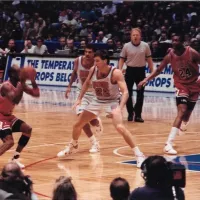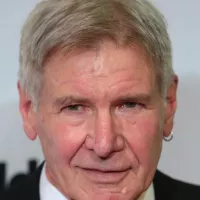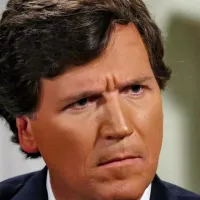Half-Life 2, a 2004 first-person shooter game created by Valve Corporation, immerses players in a fight against the Combine, an alien empire that has taken over Earth. Players step into the shoes of Gordon Freeman, who aligns with a resistance movement to liberate the planet. Building upon its predecessor, Half-Life (1998), the game seamlessly blends shooting action, puzzle-solving, and a compelling narrative, introducing novel elements like vehicles and physics-based gameplay.
1998: Gameplay Mechanics Inspired by Half-Life
The developers designed Half-Life 2's gameplay mechanics to be similar to those of the original Half-Life (released in 1998). These mechanics include familiar health and weapon systems, physics-based puzzles, and an approach to exploration and item acquisition.
1998: Half-Life Release
The original Half-Life, a first-person shooter game that set the stage for Half-Life 2, was released in 1998.
June 1999: Half-Life 2 Development Begins
Development of Half-Life 2 started in June 1999, marking the beginning of a long and ambitious journey for Valve.
January 2000: Half-Life 2 Among Best-Selling PC Games
Between January 2000 and August 2006, Half-Life 2 was the 17th best-selling PC game in the United States.
2001: Havok Physics Engine and Gameplay Experiments
In 2001, Valve incorporated the Havok physics engine into Half-Life 2 to create realistic physics interactions. To explore its potential, they developed a minigame called "Zombie Basketball" and a battle scenario involving citizens and police.
2001: Showreel Development and Feedback
In late 2001, Valve began working on a showreel for Half-Life 2, aiming to present it at E3 the following year. After months of development, Gabe Newell provided feedback, suggesting that the physics' impact on gameplay wasn't clear and a scene with Dr. Kleiner was too long. This feedback led to a greater emphasis on connecting character interactions with gameplay.
September 2002: Second Showreel and E3 2003 Announcement
Valve finalized a second showreel in September 2002, showcasing various gameplay elements like a buggy race and an alien strider attack. In October, the decision was made to announce Half-Life 2 at E3 2003 and aim for a release within the same year. Similar to the original Half-Life's development, the team adopted a "cabals" structure, with different groups focusing on specific levels.
September 30, 2003: E3 2003 Success and Missed Release Date
Half-Life 2 received acclaim at E3 2003, earning the Game of the Show award. Newell announced a September 30, 2003, release date, intending to motivate the team. However, by July, it was evident that they wouldn't meet the deadline, fueling rumors of a delay. Valve officially confirmed the delay on September 23, aiming for a holiday season release, which was met with disappointment from fans.
2003: 64-bit Source Engine on Windows Server 2003 x64
In 2003, Valve released a 64-bit version of the Source engine compatible with Windows Server 2003 x64.
2003: Half-Life 2 Announcement and Delay
Valve announced Half-Life 2 at E3 2003, initially aiming for a September release. However, they couldn't meet the deadline, resulting in fan disappointment. Adding to the challenges, a hacker stole and leaked an unfinished version of the game a year before its intended release, impacting the team's morale and development speed.
2003: E3 2003 Announcement and Development Approach
Valve announced Half-Life 2 at E3 2003, opting for a development structure where designers created levels with placeholder elements, later refined by artists.
March 2004: Source Code Leak and Hacker's Arrest
In March 2004, Axel Gembe, the German hacker who had stolen the Half-Life 2 source code, contacted Gabe Newell. Claiming to be a fan, Gembe explained his actions. Newell, in collaboration with the FBI, arranged a fake job interview to apprehend Gembe in the United States. However, he was arrested in Germany before that could happen.
August 26, 2004: Partial Release on Steam
Valve released a 1 GB encrypted portion of Half-Life 2 for download on Steam on August 26, 2004. This allowed Steam users to purchase, unlock, and play the game as soon as it was officially released without waiting for a full download.
September 20, 2004: Legal Battle over Cyber Café Distribution
On September 20, 2004, GameSpot reported that Sierra's parent company, Vivendi Universal Games, was in a legal battle with Valve over the distribution of Half-Life 2 to cyber cafés.
October 13, 2004: Half-Life 2 Completion
After months of intense work, bug fixing, and playtesting, Half-Life 2 was finally completed on October 13, 2004.
November 16, 2004: Half-Life 2 Steam Launch
Half-Life 2 was officially released on Steam on November 16, 2004.
November 29, 2004: Court Ruling Favors Valve in Distribution Dispute
On November 29, 2004, Judge Thomas S. Zilly, of U.S. Federal District Court in Seattle, Washington, ruled that Vivendi and its affiliates are not authorized to distribute Half-Life 2 through cyber cafés for pay-to-play activities.
December 2004: Demo Version Release
A demo version of Half-Life 2, featuring content from the "Point Insertion" and "We Don't Go To Ravenholm..." chapters, was released in December 2004. This demo was distributed through a partnership with graphics card manufacturer ATI Technologies.
2004: Half-Life 2 Release
Half-Life 2, a first-person shooter game developed and published by Valve Corporation, was released in 2004.
2004: Half-Life 2 Wins Multiple Awards
In 2004, Half-Life 2 received numerous awards, including Edge's Best Game of the Year, six British Academy Video Games Awards, and Computer Games Magazine's fourth-best computer game of 2004.
2004: Half-Life 2 Deathmatch Mode Release
In 2004, Valve released a deathmatch mode for Half-Life 2.
2004: Half-Life 2 Nominated for Computer Gaming World Awards
In 2004, the editors of Computer Gaming World nominated Half-Life 2 for their "Single-Player Shooter of the Year" and overall "Game of the Year" awards.
April 29, 2005: Valve and Vivendi Reach Settlement
On April 29, 2005, Valve and Vivendi announced a settlement. Vivendi would cease distributing all retail packaged versions of Valve games by August 31, 2005.
August 31, 2005: Vivendi Ceases Retail Distribution of Valve Games
On August 31, 2005, Vivendi ceased distributing all retail packaged versions of Valve games, marking the end of their distribution agreement.
September 2005: Game of the Year Edition Release
Electronic Arts released the Game of the Year edition of Half-Life 2 in September 2005. This edition included both the base game and Half-Life: Source.
2005: Half-Life 2: Lost Coast Release
Half-Life 2: Lost Coast, a free extra level for Half-Life 2, was released in 2005.
2005: Lost Coast Level and 64-bit Engine Released
In 2005, Valve released an extra level, Lost Coast, as a free download, and a 64-bit version of the Source engine for newer Windows systems.
August 2006: Half-Life 2 Sales in the US
By August 2006, the PC version of Half-Life 2 had sold 680,000 copies and earned $34.3 million in the United States.
November 2006: Hacker Sentencing
Axel Gembe, the hacker who leaked the Half-Life 2 source code, was sentenced to two years of probation in November 2006.
2006: Half-Life 2: Episode One Release
Half-Life 2: Episode One, the first episodic sequel to Half-Life 2, was released in 2006.
2006: Half-Life 2: Survivor Arcade Game Released
In 2006, Valve partnered with Taito to release Half-Life 2: Survivor, an arcade game for the Japanese market.
2007: Half-Life 2: Episode Two Release
Half-Life 2: Episode Two, the second episodic sequel to Half-Life 2, was released in 2007.
2007: Half-Life 2 Included in The Orange Box
In 2007, Valve rereleased Half-Life 2 as part of the compilation The Orange Box for Windows, Xbox 360 and PlayStation 3.
September 2008: Valve Integrates Mods into Steamworks
In September 2008, Valve demonstrated their support for the Half-Life 2 modding community by integrating several mods into the Steamworks program. This integration empowered these mods to leverage Steam's robust distribution and update functionalities.
2008: Half-Life 2 Awarded Guinness World Records
In 2008, Guinness World Records awarded Half-Life 2 several world records, including "Highest Rated Shooter by PC Gamer Magazine", "Largest Digital Distribution Channel", "First Game to Feature a Gravity Gun", and "First PC Game to Feature Developer Commentary".
2008: 64-bit Source Engine on Windows Server 2008 x64
In 2008, Valve's 64-bit Source engine was made available for systems running Windows Server 2008 x64.
2009: Half-Life 2 Ranked Highly in "Top Games of All Time" Lists
In 2009, Game Informer placed Half-Life 2 5th on their list of "The Top 200 Games of All Time".
May 26, 2010: Half-Life 2 Released for Mac OS X
On May 26, 2010, Half-Life 2, Episode One and Episode Two were released for Mac OS X.
February 9, 2011: Half-Life 2 Sales Reach 12 Million
On February 9, 2011, Forbes reported that Half-Life 2 had sold 12 million copies worldwide.
2011: Half-Life 2 Sales Milestone
By 2011, Half-Life 2 had achieved remarkable sales, reaching 12 million copies sold.
2012: Half-Life 2 Wins Game of the Decade Awards
In 2012, Half-Life 2 received several "Game of the Decade" awards, including wins from Reviews on the Run, IGN, and the Spike Video Game Awards.
2013: Half-Life 2 Ported to Linux and Receives Oculus Rift Support
In 2013, Valve ported Half-Life 2 to Linux and released a free update adding support for the Oculus Rift virtual reality headset.
May 12, 2014: Half-Life 2 Released for NVIDIA Shield Tablet
On May 12, 2014, an NVIDIA Shield Tablet-exclusive port of Half-Life 2 was released for Android.
2020: Half-Life: Alyx Release
In 2020, Valve released Half-Life: Alyx, a prequel to the Half-Life series, after cancelling Episode Three and several other Half-Life projects.
December 2021: IGN Names Half-Life 2 Ninth-Best Game of All Time
In December 2021, IGN ranked Half-Life 2 as the ninth-best game of all time.
January 2022: New UI for Steam Deck Released
In January 2022, a new UI designed for Valve's portable Steam Deck device was released for Half-Life 2.
September 2022: Half-Life 2: VR Mod Release
After a decade of development, a fan-made full VR mod called "Half Life 2: VR Mod" was released in September 2022.
2022: Controversy over Corpse Texture Origins
In 2022, fans discovered that the texture used for a corpse model in Half-Life 2 originated from a real photograph of a corpse published in a medical textbook on treating burns, leading to criticism.
Mentioned in this timeline

Basketball is a team sport played on a rectangular court...
PlayStation is a video game brand by Sony Interactive Entertainment...
Xbox is a video gaming brand owned by Microsoft Gaming...

Nvidia is a technology company based in Santa Clara California...
Germany officially the Federal Republic of Germany is a Western...

The Steam Deck a handheld gaming computer by Valve allows...
Trending

7 months ago Harrison Ford and Gene Simmons to be honored by Operation Smile for charity.

4 months ago Celebrating Chris Hemsworth's Birthday: Iconic Roles from Thor to Extraction and Beyond

5 months ago Sizzling Sunday with Showers; Rain Chances Next Week and Summer Pattern Returns
24 days ago Alabama Power Announces Electricity Rate Freeze Through 2027 Amid Budget Concerns.
6 months ago China and Taiwan tensions escalate, with Taiwan seeking unity amidst threats.

14 days ago Jayson Tatum Wants to Play with Son Deuce in NBA for Ten More Years.
Popular

Candace Owens is an American conservative political commentator and author...

Tucker Carlson is an American conservative political commentator known for...

XXXTentacion born Jahseh Dwayne Ricardo Onfroy was a controversial yet...

Ilhan Omar is an American politician currently serving as the...

Kashyap Pramod Patel is an American lawyer who became the...

Bill Gates an American businessman and philanthropist revolutionized personal computing...